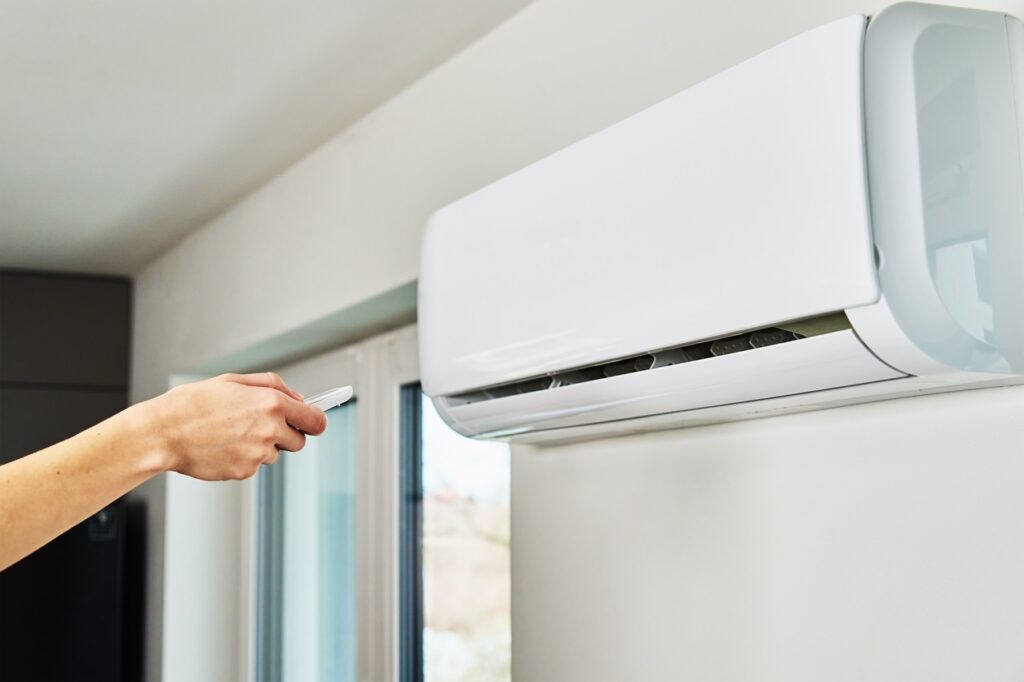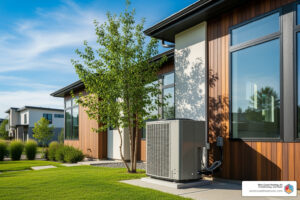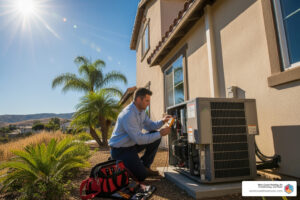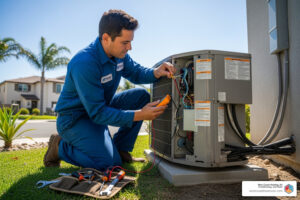Installing a new air conditioning system in an older El Cajon home can bring much-needed relief during the hottest months of the year. But before that system gets switched on, there are several factors that need attention. A lot of older homes weren’t built with central AC in mind. That means things like electrical load, duct access, and overall structure could affect both the installation and the performance of the system.
A cookie-cutter solution won’t always work when it comes to AC installation in El Cajon’s older properties. Homes here can range from small mid-century single-levels to larger two-story structures that have had multiple updates over the decades. This variety makes it even more important to take the right steps before moving forward with installation, so the system works properly without causing issues later.
Evaluating Structural Integrity
Before choosing any unit or cutting into drywall, it’s important to look at how the home is built and whether it can support a modern AC system. Older framing and materials can pose challenges that newer homes don’t have. Hidden construction details could impact everything from airflow to mounting options.
Start by reviewing the following areas:
1. Wall and Ceiling Strength
If the system you’re installing includes vents or ductwork, the walls and ceilings need to be strong enough to support those additions. Plaster walls or aging drywall should be checked ahead of time. Weak surfaces can crack during installation or may not hold weight properly.
2. Electrical Capacity
Many older homes weren’t wired to handle appliances with modern energy requirements. The electrical panel may be undersized, or wiring throughout the house might be outdated. A new AC system needs the right voltage and connection to run safely and reliably. An electrical upgrade may be required before installing.
3. Insulation Levels
Poor insulation will cause the AC system to work harder, driving up energy use and cutting short the lifespan of major components. Evaluating attic insulation, wall insulation, and even window seals can highlight problem spots. Fixing these areas supports better climate control and energy efficiency.
A homeowner in El Cajon recently struggled with uneven cooling after installing a new system in their 1960s home. The insulation in their attic was thin and patchy, causing rooms on the second floor to feel warm even when the AC ran all day. Once the insulation was replaced, the problem was solved, and the system didn’t have to run constantly to keep up.
Choosing The Right System
Once the home’s structure and electrical readiness are understood, the next step is selecting the best type of AC system for the property. Not every solution fits every floor plan, and older homes often require more careful consideration.
Here are the three key areas to compare:
1. Central Air vs. Ductless Mini-Split
Central air works well for homes that already have existing ductwork in decent condition. But homes without ducts, or with small attic spaces, may benefit from a ductless mini-split system. These units can serve individual rooms and avoid the need for major renovations. Each option has different costs and space requirements, so it’s worth evaluating what best fits your home’s layout.
2. Energy Efficiency
Look at how energy-efficient the system is before selecting a model. Higher-rated units use less electricity and maintain better indoor comfort. For El Cajon’s hot summers, this can make a noticeable difference in your monthly bills. The most efficient systems often include features like variable-speed compressors and smart thermostats.
3. Proper Sizing
Installing a system that’s too large or too small can lead to issues later. A unit that’s too powerful will cool the home quickly but won’t remove enough humidity. A system that’s too small won’t reach the right temperature on especially hot days and may run non-stop. Getting the sizing right means taking the home’s square footage, ceiling height, insulation, and room layout into account.
The wrong AC system can lead to high costs, poor airflow, and noise complaints. Making sure the proper evaluations are done and the correct equipment is selected saves time, money, and frustration over the long run.
Ductwork Considerations in Older El Cajon Homes
Ductwork can be a major sticking point when upgrading or adding air conditioning to an older home in El Cajon. Many of these homes either weren’t built with HVAC ductwork in mind or have systems that were added decades ago without current codes or efficiency in mind. Before any AC installation moves forward, it’s important to assess the duct system if one even exists and plan accordingly.
In homes with existing ducts, age, wear, and poor layout are common issues. Ducts may have leaks, damaged seals, or sections that are crushed or disconnected. These problems limit the system’s ability to move air properly and will reduce its overall efficiency. Even if the home cools eventually, it may take much longer and use more electricity than it should.
When ductwork is outdated or missing, you have a few paths to consider:
1. Inspect existing ducts for airflow restrictions and leaks
Use a pressure test to identify issues before the new system is in place.
2. Repair old ducts by sealing joints and insulating them
This reduces energy loss and noise while improving performance.
3. Replace or add ducts as needed
In homes without a duct system, sometimes a partial layout works for central air if the space allows. If it doesn’t, a ductless system may be a better option.
4. Consider zoning or multiple units in larger homes
Running ducts across multiple additions or remodeled spaces may not be practical, and splitting the load can help balance indoor comfort better.
If the layout is tight, such as in a craftsman or early ranch-style home with low ceilings or limited attic access, ductless systems may be more efficient and simpler to install. Homes with large additions or converted garages are often good candidates for split systems as well.
A client in El Cajon had an AC unit before, but the ducts were over 40 years old. The layout was uneven, and the kitchen never got cool even when the rest of the house was fine. After replacing those sections and sealing the full system, they noticed a dramatic improvement in both comfort and airflow.
Why Professional Installation Matters
An AC system isn’t something you can just plug into a wall and turn on. Installation in older properties comes with enough variables that it’s best handled by people trained to spot potential problems early. Our technicians deal with these setups every day and bring the planning and experience needed to avoid costly errors.
One mistake during setup like misjudging duct placement or overloading a worn electrical panel could lead to performance problems or safety issues. There’s also the question of city regulations and permit requirements, which often change and vary depending on the age and type of property.
Here’s why relying on our professionals is the better path:
1. We verify existing structures and wiring for safety compliance
2. We design systems that work with your home’s layout instead of forcing one in
3. We handle any permit or inspection needs required by the City of El Cajon
4. We test the system after installation to guarantee airflow and performance
5. We provide ongoing service to support system performance long-term
That kind of support becomes especially important during the heat of an El Cajon summer, when long stretches of high temperatures push AC systems to their limits. Having a properly installed and well-sized unit means fewer breakdowns and a more comfortable home, even when the weather hits triple digits.
Comfort and Efficiency Start With the Right Plan
Installing a new AC system in an older El Cajon home brings more to the table than just upgraded equipment. It brings peace of mind. But that only happens when each part of the process structure, wiring, ductwork, and right-sizing is carefully planned from the start. Cutting corners or skipping steps can lead to higher costs, uneven cooling, or future repairs that could have been avoided.
Taking the time to evaluate every part of the home means the new AC will not only work but will work better for longer. A cooler, quieter, and more energy-efficient home is the goal, and it’s fully within reach with the right planning and support.
Homeowners in El Cajon deserve solutions that match the unique conditions and charm of their homes, not a one-size-fits-all approach. A proper installation keeps the property comfortable for years to come and makes sure the new system runs like it’s supposed to without constant adjustment or intervention. That’s the difference between just having AC and having one that truly performs.
If you are ready to improve your home’s comfort without the worry of future repairs, consider a tailored solution like AC installation in El Cajon that aligns with your layout and energy needs. The professionals at West Coast Heating, Air Conditioning, and Solar specialize in addressing everything from outdated ductwork to inadequate insulation, ensuring a smooth installation process and dependable performance throughout the hottest days. For a quick estimate or to book a service visit, please contact us today.





